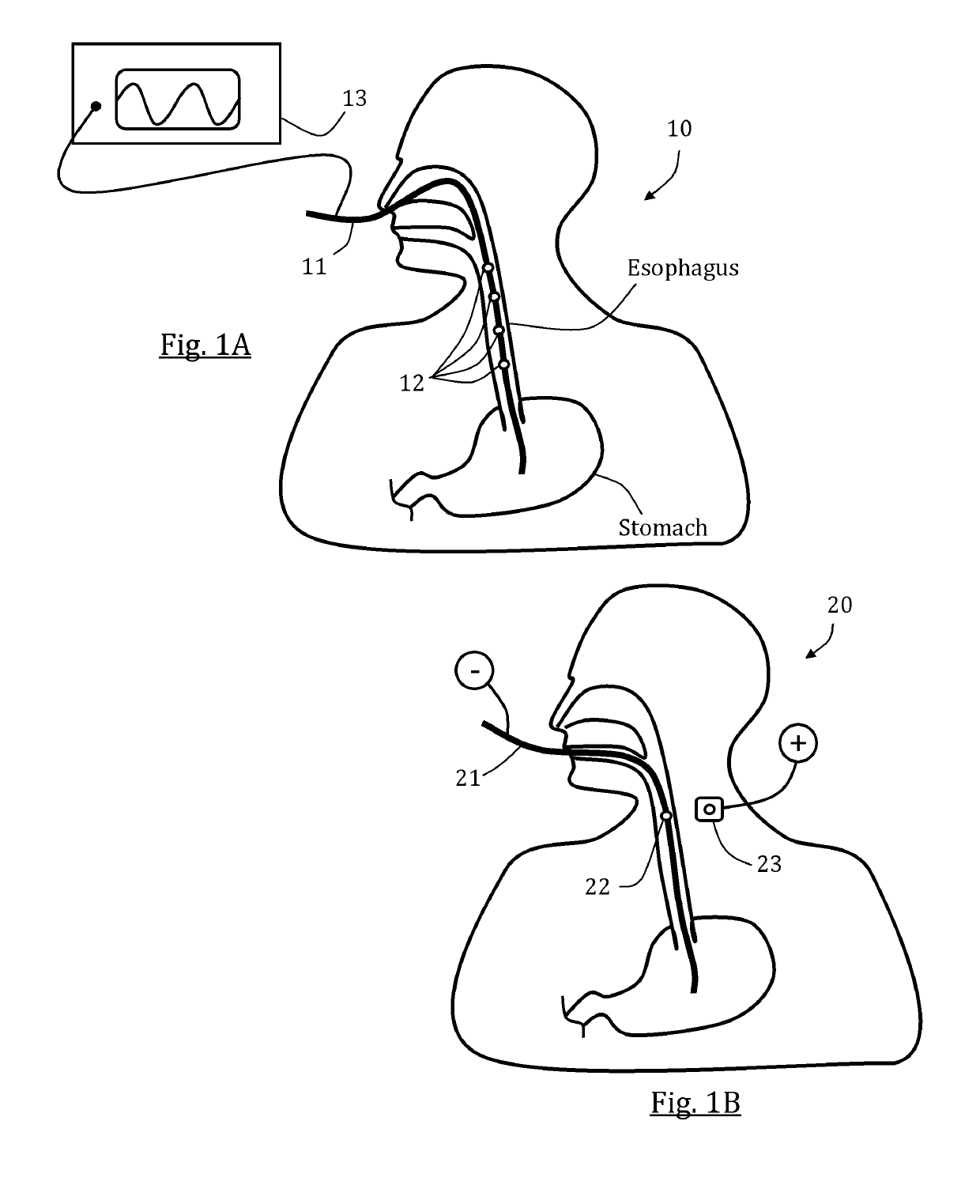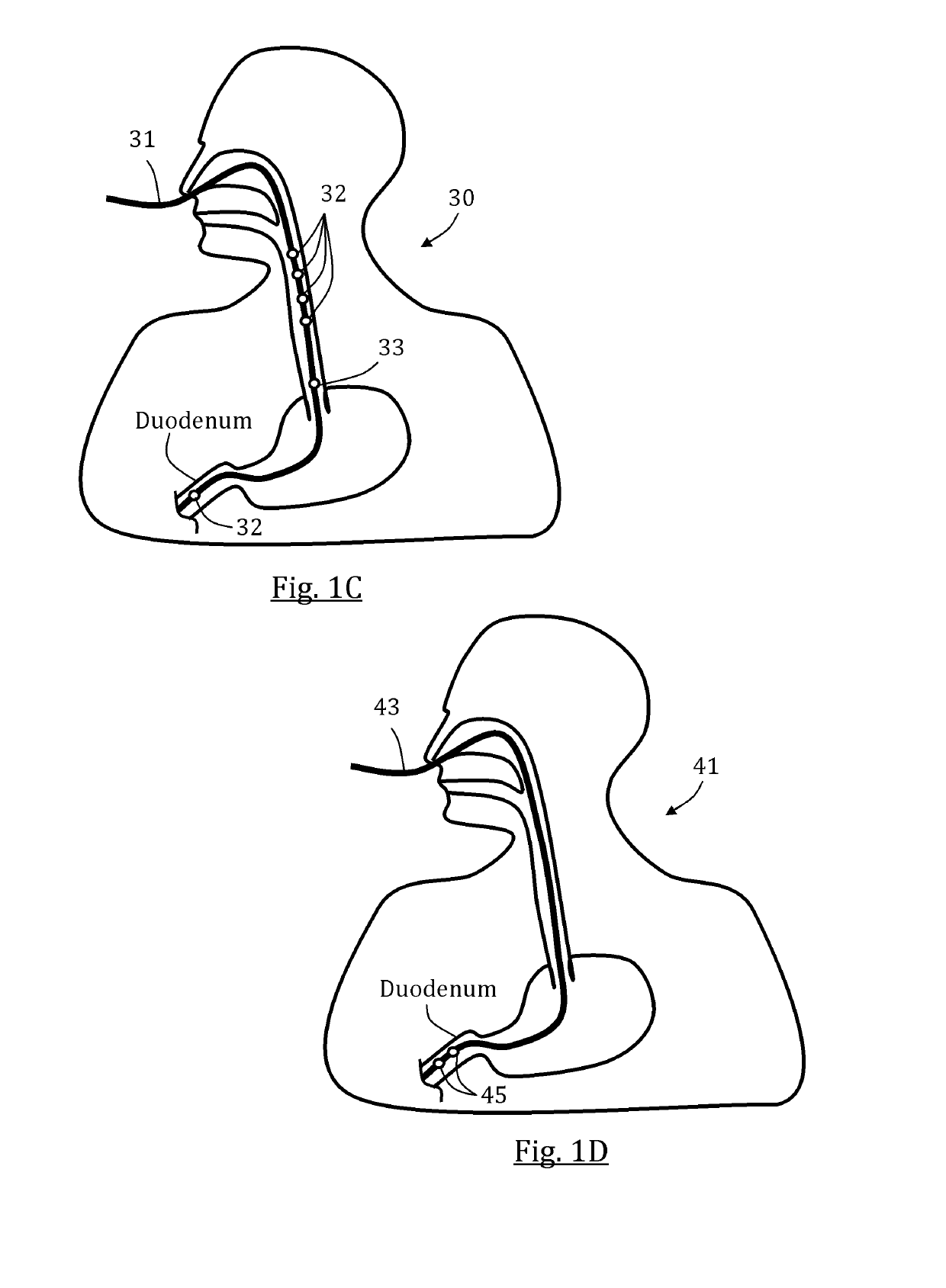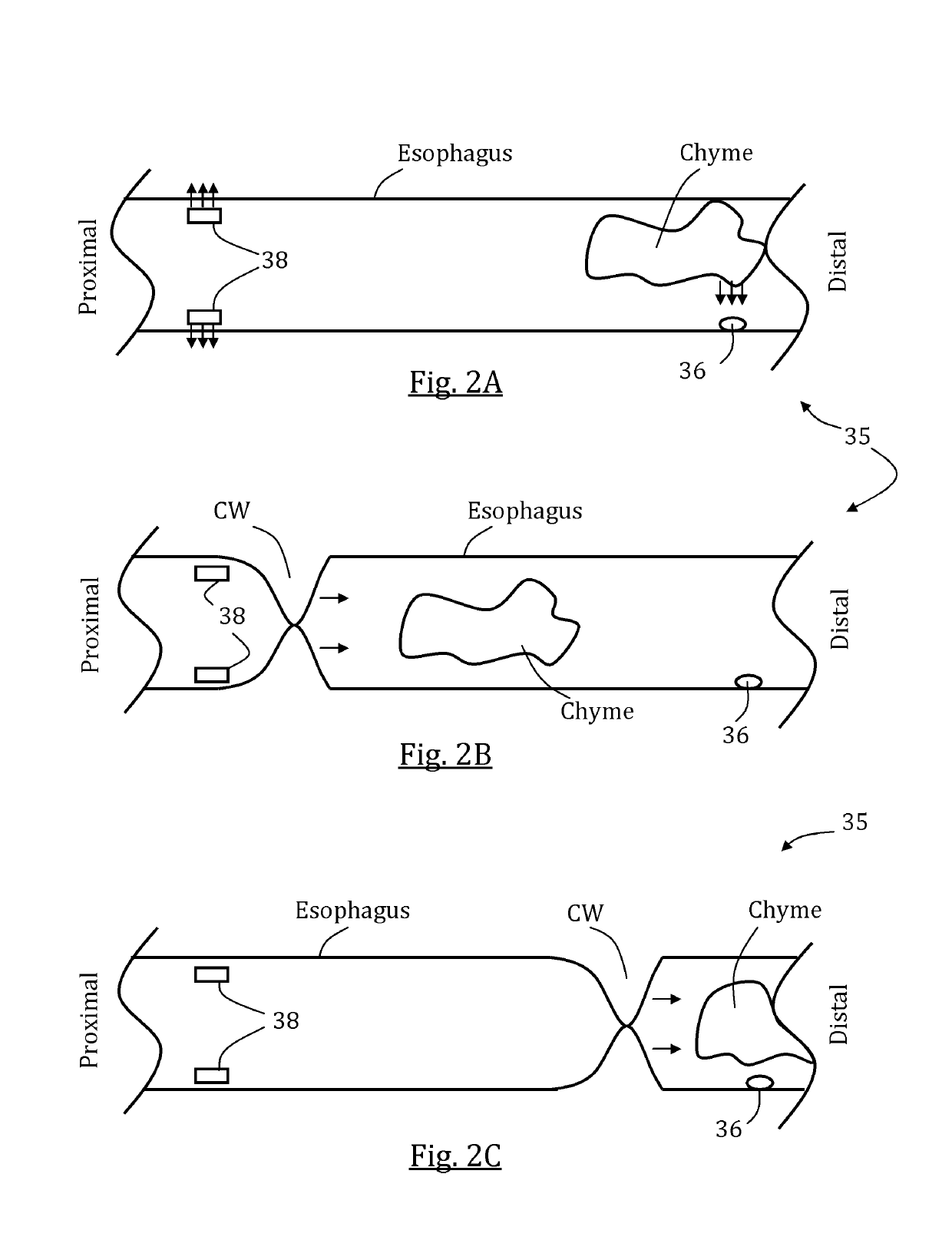GI tract stimulation devices and methods
a technology of gi tract and stimulation device, which is applied in the direction of internal electrodes, artificial respiration, therapy, etc., can solve the problems of increasing morbidity and mortality rate, affecting the effect of gi tract stimulation, and patients' body not being able to properly transfer and digest incoming food, etc., to achieve the effect of effective function disregard, avoiding stimuli, and improving energy efficiency
- Summary
- Abstract
- Description
- Claims
- Application Information
AI Technical Summary
Benefits of technology
Problems solved by technology
Method used
Image
Examples
Embodiment Construction
[0060]The following preferred embodiments may be described in the context of exemplary esophageal stimulation procedures for ease of description and understanding. The term “exemplary” used throughout this description means “serving as an example, instance, or illustration,” and should not necessarily be construed as preferred or advantageous over other embodiments. Other embodiments may be utilized and the described devices and methods may be adapted for other clinical applications without departing from the spirit or scope of the subject matter presented here.
[0061]The present invention, in some embodiments thereof, relates to devices and methods for initiating and / or sustaining minimal function of at least a portion of the GI tract, and in particular to devices and methods for generating movement in one or more GI organs, optionally including at least esophageal motility for diminishing retrograde flow of gastric contents and / or for promoting gastric digestion. Devices and relate...
PUM
 Login to View More
Login to View More Abstract
Description
Claims
Application Information
 Login to View More
Login to View More - R&D
- Intellectual Property
- Life Sciences
- Materials
- Tech Scout
- Unparalleled Data Quality
- Higher Quality Content
- 60% Fewer Hallucinations
Browse by: Latest US Patents, China's latest patents, Technical Efficacy Thesaurus, Application Domain, Technology Topic, Popular Technical Reports.
© 2025 PatSnap. All rights reserved.Legal|Privacy policy|Modern Slavery Act Transparency Statement|Sitemap|About US| Contact US: help@patsnap.com



